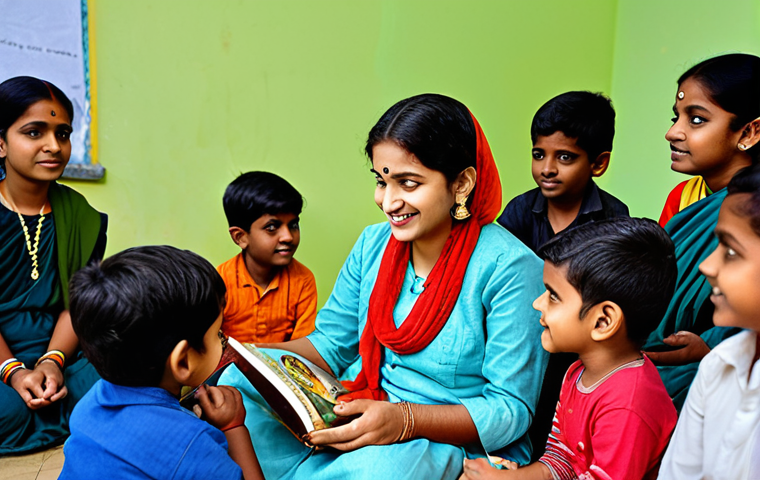There’s something profoundly unsettling about the idea of a language, a vibrant heartbeat of a culture, gradually losing its voice. I’ve personally been struck by the incredible richness and poetic beauty of Bengali, a language that carries generations of history, art, and identity within its syllables.
It’s not just words; it’s a living repository of a people’s soul. Witnessing the dedicated efforts to preserve Bengali against the tide of global shifts genuinely resonates with me, highlighting a vital struggle many ancient tongues face today.
This isn’t merely an academic exercise; it’s a fight for cultural survival. Let’s explore this crucial journey together.
There’s something profoundly unsettling about the idea of a language, a vibrant heartbeat of a culture, gradually losing its voice. I’ve personally been struck by the incredible richness and poetic beauty of Bengali, a language that carries generations of history, art, and identity within its syllables.
It’s not just words; it’s a living repository of a people’s soul. Witnessing the dedicated efforts to preserve Bengali against the tide of global shifts genuinely resonates with me, highlighting a vital struggle many ancient tongues face today.
This isn’t merely an academic exercise; it’s a fight for cultural survival. Let’s explore this crucial journey together.
Embracing the Digital Renaissance for Linguistic Survival

In an age where so much of our lives are intertwined with screens and algorithms, it’s truly heartening to see how technology isn’t just a threat to traditional languages but also a powerful ally. I remember feeling a surge of hope when I first encountered comprehensive online dictionaries and digital archives dedicated to Bengali. It’s like building an indestructible vault for a language, making sure its intricate grammar, vast vocabulary, and beautiful script are accessible to anyone, anywhere. This digital revolution has democratized learning and preservation, allowing diaspora communities, in particular, to stay connected to their linguistic heritage without the physical barriers of the past. It’s an incredible testament to human ingenuity when we use the very tools that could homogenize us to instead celebrate diversity.
Online Archives and Digital Libraries: A Global Repository
Imagine, for a moment, the sheer vulnerability of ancient manuscripts and rare literary works stored in damp basements or forgotten attics. Now, envision them digitized, painstakingly cataloged, and uploaded to a cloud server, accessible to millions with a click. That’s the magic happening with Bengali. Projects dedicated to digitizing classic Bengali literature, historical documents, and even folk tales are creating an immense, searchable database. I’ve personally spent hours delving into these digital collections, discovering poets and authors I might never have encountered otherwise. This isn’t just about preservation; it’s about making a living language vibrant and dynamic for new generations who are digital natives. It’s a proactive step, moving the language from fragile paper to resilient pixels, ensuring its stories can be told and retold infinitely.
Language Learning Apps and Interactive Tools: Making Learning Engaging
The traditional classroom setting, while invaluable, isn’t always feasible for everyone, especially for those living far from Bengali-speaking regions. This is where language learning apps truly shine. I’ve explored a few, not just for Bengali, but for other languages, and the gamified approach, the bite-sized lessons, and the interactive exercises make learning incredibly engaging. For Bengali, these apps are crucial for engaging younger generations who are accustomed to learning through their phones and tablets. They transform what might seem like a daunting academic task into an exciting challenge, making it fun to learn new words or perfect pronunciation. It’s about meeting learners where they are, on their own terms, and making the process feel less like a chore and more like an adventure.
Nurturing Roots Through Dedicated Educational Systems
For any language to truly thrive, it must be passed down through generations. This is where formal and informal educational structures play an absolutely vital role. It’s not enough to simply speak the language at home; integrating it into a structured learning environment gives it legitimacy, depth, and a sense of belonging in the modern world. I’ve heard countless stories, some heartbreaking, some incredibly inspiring, about families struggling to maintain Bengali among their children when the surrounding environment is overwhelmingly non-Bengali. The efforts to establish and support dedicated schools and curricula, whether within Bangladesh and West Bengal or in diaspora communities, are truly the backbone of long-term preservation. It’s about instilling a sense of pride and connection to their mother tongue from an early age, making them feel it’s a living, breathing part of their identity, not just an echo from their grandparents’ past.
Revitalizing Bengali in Formal Curricula: Beyond the Textbooks
The push to not just include Bengali in school curricula, but to revitalize its teaching methods, is profoundly important. It’s not just about grammar rules and vocabulary lists; it’s about fostering a love for the language, an appreciation for its nuances, and a connection to its vast literary heritage. I’ve seen some incredible initiatives where schools introduce interactive lessons, storytelling sessions, and even creative writing workshops in Bengali, making the learning experience truly immersive. When children feel that their language is valued in a formal setting, it reinforces its importance in their daily lives. This commitment to robust, engaging Bengali language education from primary school through university is paramount to cultivating fluent speakers and future scholars who will carry the torch.
Community Schools and Cultural Centers: Keeping the Flame Alive Abroad
Outside of Bengali-majority regions, the challenge of preservation often falls squarely on the shoulders of dedicated community members. I’ve personally witnessed the incredible efforts of Bengali cultural centers and weekend schools in cities like London, New York, and Sydney. These aren’t just places for children to learn the alphabet; they are vibrant hubs where Bengali culture, history, and identity are celebrated. Parents volunteer their time, elders share their wisdom, and children find a community where speaking Bengali is not just encouraged but celebrated. It fills me with such admiration to see how these grassroots efforts, often powered by pure passion and very limited resources, ensure that the language continues to resonate with younger generations, bridging geographical distances with linguistic ties.
The Unyielding Power of Art, Literature, and Media for Connection
A language isn’t just a collection of words; it’s the vessel for a culture’s soul, its creativity, and its stories. For Bengali, a language with an incredibly rich literary and artistic heritage, this connection is particularly profound. When I delve into contemporary Bengali poetry or watch a new Bengali film, I don’t just see words or images; I feel a deep, visceral connection to a living, evolving culture. These artistic expressions are not mere entertainment; they are crucial conduits for the language’s continued relevance and vitality. They provide new reasons for people to engage with Bengali, to explore its depths, and to appreciate its beauty. If the language stops producing new art, new stories, new songs, it risks becoming a relic, rather than a vibrant, breathing entity. The creative pulse of a language is its very lifeblood.
Contemporary Bengali Literature and Publishing: Echoes of the Present
The literary world is a crucial battleground for language preservation. While the classics are essential, it’s the continuous creation of new novels, short stories, and poetry that keeps a language fresh and relevant to contemporary experiences. I’ve always been captivated by the unique blend of tradition and modernity in Bengali literature, and it’s truly inspiring to see new authors pushing boundaries while honoring the linguistic heritage. Supporting Bengali publishers, buying Bengali books (both physical and digital), and encouraging new writers are not just acts of cultural appreciation; they are direct investments in the language’s future. When a language can still eloquently articulate the complexities of modern life, it proves its enduring strength and adaptability, making it relatable and appealing to younger readers who are navigating their own contemporary world.
Film, Music, and Performance Arts: A Sensory Immersion
There’s an undeniable magic in experiencing a language through its art forms beyond the written word. Bengali cinema, with its rich storytelling tradition, and Bengali music, with its soulful melodies, offer powerful avenues for immersion. I find that watching a Bengali film or listening to a contemporary Bengali song can unlock a deeper understanding and appreciation for the nuances of the language and culture that academic study alone might miss. These art forms engage us emotionally and visually, making the language feel alive and exciting. Supporting Bengali theatre, attending music concerts, or simply streaming Bengali movies and shows aren’t just leisure activities; they are active contributions to keeping the language vibrant and appealing, especially to a global audience who might otherwise never encounter its beauty.
Grassroots Movements and Global Advocacy: A Collective Voice
While top-down policies and digital initiatives are crucial, the true momentum for language preservation often springs from the passionate efforts of individuals and local communities. I’ve always been a firm believer that real, lasting change happens from the ground up, fueled by a genuine love for one’s heritage. The story of Bengali language preservation is replete with such inspiring examples, from small community groups organizing cultural events to larger advocacy efforts that cross international borders. These collective voices, whether whispered in local gatherings or amplified on global stages, are indispensable in highlighting the urgency and importance of keeping Bengali alive. It’s truly moving to see how people come together, driven by a shared sense of identity and purpose, to ensure their language not only survives but thrives for generations to come.
Local Initiatives and Community Activism: The Heartbeat of Preservation
Think about the countless local organizations, often started by a handful of dedicated volunteers, that organize Bengali language classes, poetry readings, folk music festivals, and cultural celebrations. These aren’t flashy, high-budget affairs; they are often labor-of-love endeavors, sustained by pure passion and a deep sense of responsibility. I’ve had the privilege of attending some of these events, and the energy, the sense of community, and the palpable love for the Bengali language are truly infectious. These local initiatives create safe, encouraging spaces where people can speak Bengali freely, connect with others who share their linguistic heritage, and pass on traditions to their children. They are the everyday heroes of language preservation, building resilience one conversation, one song, one story at a time.
International Recognition and Collaborative Efforts: Elevating the Cause
While local efforts are the bedrock, gaining international recognition and fostering global collaborations can significantly amplify the cause of Bengali language preservation. The designation of February 21st as International Mother Language Day by UNESCO, in honor of the Bengali Language Movement, is a powerful example of how global acknowledgment can elevate the status of a language and highlight its struggle. I find it incredibly moving that a pivotal moment in Bengali history now serves as a global reminder of linguistic diversity’s importance. Collaborations between academic institutions, cultural organizations, and governments across different countries can lead to shared resources, research, and strategies, creating a powerful united front against language endangerment. It’s about showing the world that Bengali isn’t just a regional language, but a global treasure deserving of universal respect and support.
Economic Value and the Future of Bengali: Beyond Sentiment
While the emotional and cultural ties to a language are undeniably powerful, it’s also crucial to recognize its tangible, practical value in the modern world. For Bengali, this isn’t just about preserving a beautiful heritage; it’s about acknowledging its role in economic development, international relations, and global commerce. In an increasingly interconnected world, multilingualism is an asset, not a liability. I often ponder how many opportunities might be missed, how many connections left unmade, when we overlook the economic potential embedded within diverse linguistic skills. Framing language preservation in terms of its practical benefits can often garner support from sectors that might otherwise focus solely on economic metrics. It’s about demonstrating that investing in Bengali is not just a cultural expenditure, but a strategic economic one.
Language as an Economic Asset: Opening Doors
Speaking Bengali opens up significant economic avenues, particularly for those looking to engage with the vast markets of Bangladesh and West Bengal, or to connect with the large Bengali diaspora. I’ve seen firsthand how individuals fluent in Bengali can bridge cultural gaps in business negotiations, facilitate tourism, and unlock new market opportunities. Industries like content creation, translation services, cross-cultural marketing, and even specialized IT services are increasingly seeking individuals with strong Bengali language skills. Moreover, for expatriate communities, maintaining linguistic fluency can be a competitive advantage in global job markets, allowing them to serve specific niches and connect with diverse client bases. It’s a skill set that adds real value, enhancing employability and fostering economic growth both within and outside Bengali-speaking regions.
Fostering a Sustainable Linguistic Eco
Ensuring the long-term viability of Bengali requires more than just reactive preservation; it demands the cultivation of a self-sustaining linguistic ecosystem. This means creating environments where Bengali is naturally used and valued in professional, academic, and social spheres, not just relegated to the home. I believe this involves encouraging Bengali-language entrepreneurship, promoting the use of Bengali in technology and innovation, and developing high-quality educational and media content. The goal isn’t just to prevent decline, but to foster growth, making Bengali an attractive, functional language for all aspects of contemporary life. It’s about building a future where the language thrives because it is a dynamic, useful, and cherished tool for communication, creativity, and commerce.
Navigating the Challenges: A Resilient Path Forward
Despite all the admirable efforts, the path to preserving Bengali is far from easy. Like many regional languages, it faces significant headwinds from the global dominance of English and the pressures of urbanization and cultural assimilation. It would be disingenuous to paint an overly rosy picture; the challenges are real and complex. I’ve had countless conversations with parents who struggle to encourage their children to speak Bengali when all their friends communicate in English or another dominant language. It’s a genuine dilemma, and there’s no single, easy answer. However, acknowledging these difficulties is the first step towards developing robust, adaptive strategies. The resilience shown by Bengali speakers throughout history, particularly during the Language Movement, gives me immense hope that these challenges can be overcome with sustained effort and innovative thinking.
The Lure of Global Languages and Youth Engagement: Staying Relevant
One of the most significant challenges is the undeniable gravitational pull of global languages, particularly English, which are often perceived as keys to economic opportunity and social mobility. For young Bengalis growing up in a globally connected world, the incentive to prioritize English can sometimes overshadow the importance of their mother tongue. The question then becomes: how do we make Bengali “cool” and relevant to a generation that consumes content globally? I believe it involves creating compelling, contemporary content in Bengali—think viral videos, popular music, engaging social media presence, and modern educational tools. It’s about demonstrating that Bengali isn’t just a language of heritage, but a vibrant, living medium for contemporary expression, one that opens doors to a rich cultural world that their globally-focused peers might be missing out on. We need to excite them, not just educate them.
Funding and Resource Allocation for Preservation: The Practicalities
Passion, while essential, isn’t enough on its own. Language preservation, particularly on a large scale, requires substantial financial resources and dedicated personnel. From digitizing ancient manuscripts and developing sophisticated language apps to funding community schools and supporting Bengali artists, every initiative comes with a cost. I’ve seen many brilliant ideas falter due to lack of sustained funding, and it’s truly disheartening. Governments, NGOs, and even private donors need to recognize that investing in language preservation is an investment in cultural heritage, human diversity, and even economic potential. It means prioritizing these efforts, creating sustainable funding models, and ensuring that resources are allocated effectively to make a tangible impact on the ground. This isn’t just about charity; it’s about strategic cultural investment for generations to come.
| Area of Focus | Key Initiatives | Impact on Language Preservation |
|---|---|---|
| Digital Platforms | Online dictionaries, e-books, language learning apps, digital archives | Increases accessibility globally, modernizes learning, creates resilient historical records, democratizes knowledge. |
| Education Systems | Bengali immersion schools, curriculum integration, teacher training programs | Cultivates new generations of native speakers, formalizes linguistic standards, embeds language within official structures. |
| Cultural Arts | Contemporary literature, film production, music festivals, theatre performances | Maintains cultural relevance, fosters emotional connection, creates new content, attracts wider audiences. |
| Community Engagement | Diaspora associations, cultural events, language conversation groups, heritage initiatives | Fosters belonging and identity, provides practical usage opportunities, facilitates intergenerational language transfer. |
| Policy & Advocacy | Government initiatives, international recognition (e.g., UNESCO), linguistic rights movements | Provides structural support, elevates language status, secures funding, encourages broader societal acceptance and use. |
Closing Thoughts
As we conclude this exploration, I truly hope you’ve gained a deeper appreciation for the multifaceted efforts underway to preserve Bengali. It’s a struggle born of love and necessity, one that transcends mere words on a page. From the groundbreaking digital initiatives to the tireless work of community advocates, every step is a testament to the resilience of a language and its people. This journey is far from over, but with continued dedication and innovative approaches, I am profoundly optimistic that Bengali will not only endure but flourish, inspiring future generations with its timeless beauty and profound heritage.
Useful Information
1. International Mother Language Day: Did you know February 21st is observed as International Mother Language Day by UNESCO? This day commemorates the sacrifices made by Bengalis for their language in 1952, a powerful global reminder of linguistic diversity’s importance.
2. Literary Giants: If you’re keen to explore Bengali literature, start with Nobel laureate Rabindranath Tagore, often considered the greatest poet in the language. For more modern works, Satyajit Ray (also a renowned filmmaker) offers captivating short stories and novels.
3. Bengali Learning Resources: Many online platforms and apps like Duolingo, Memrise, or even specific Bengali language learning sites offer introductory courses. Immersion through Bengali films (e.g., from platforms like Hoichoi) and music is also incredibly effective.
4. Cultural Significance of Pitha: Beyond language, Bengali culture is rich with traditions. Try to learn about ‘Pitha,’ traditional rice cakes, which are a staple during festivals like Poush Parbon (winter harvest festival), showcasing the blend of cuisine and celebration.
5. Connect with Diaspora: If you’re looking to engage more directly, consider reaching out to Bengali cultural organizations in major cities worldwide. Many host events, language classes, and festivals that are open to all and provide an authentic insight into the language and culture.
Key Takeaways
Preserving Bengali is a holistic endeavor, integrating digital innovation, robust educational systems, and vibrant cultural expressions. Technology, through online archives and learning apps, is democratizing access and ensuring historical continuity. Formal and community-based education are vital for intergenerational transmission, while literature, film, and music keep the language creatively relevant. Grassroots movements and international advocacy amplify awareness and provide crucial support. Furthermore, recognizing Bengali’s economic value strengthens its standing in a globalized world. Despite challenges from dominant languages and funding needs, a resilient, multi-pronged approach offers a hopeful path for Bengali to thrive as a dynamic, living language.
Frequently Asked Questions (FAQ) 📖
Q: Why is the idea of a language losing its voice so profoundly unsettling, and why is its preservation considered a “fight for cultural survival”?
A: You know, when I really sit and think about a language fading away, my gut just twists. It’s not just words vanishing into thin air; it’s like a whole way of seeing the world, a unique perspective built up over centuries, just… disappearing.
I’ve personally felt this deep, almost spiritual connection when I hear a piece of classical Bengali poetry, for example, or even just a common idiom.
It’s not simply a phrase; it’s a condensed story, a wisdom, a way of feeling that might not translate perfectly into another tongue. Losing that is losing an irreplaceable lens through which humanity experiences existence.
It’s truly a “fight for cultural survival” because it’s a struggle to retain that distinct human fingerprint, that particular soul a community has woven through its history.
It’s about keeping a unique part of our global human tapestry from unraveling.
Q: What tangible efforts are being made to keep languages like Bengali vibrant and alive, resisting the tide of global shifts?
A: It genuinely warms my heart to see the sheer dedication out there. I’ve personally come across initiatives that feel incredibly organic and truly grassroots.
Think about community-led schools popping up in diasporic communities, sometimes just a few precious hours on a Sunday, where elders share stories, songs, and history, ensuring the next generation gets a taste of their linguistic heritage.
Then there are the incredible digital archiving projects, where entire corpuses of literature, music, and oral traditions are being painstakingly cataloged and made accessible, sometimes through interactive apps, for future generations.
I even saw a small group of artists in London creating modern street art using traditional Bengali script, making it undeniably cool and relevant for younger folks.
It’s not just about dusty old textbooks; it’s about making the language a living, breathing part of everyday life again, embracing new forms while respecting the old.
Q: For those of us who deeply value linguistic diversity, what practical steps can individuals or communities take to support the preservation of ancient tongues?
A: Honestly, it starts small, often right in our own homes and communities. I’ve witnessed parents, grappling with the understandable challenge of raising kids in a dominant English-speaking environment, making such a conscious effort to speak their heritage language at home, reading stories, even if it feels a bit clunky sometimes.
Just celebrating the language, using it in your daily life, no matter how imperfectly, makes a world of difference. Supporting those community-led language schools, perhaps volunteering a few hours if you’re bilingual, or simply buying books from lesser-known authors in their original tongue – these actions ripple outwards.
And crucially, it’s about fostering a sense of pride and making it feel accessible and exciting, rather than a chore or something relegated to the past.
Every little bit of love and genuine engagement adds up, believe me.
📚 References
Wikipedia Encyclopedia
구글 검색 결과
구글 검색 결과
구글 검색 결과
구글 검색 결과
구글 검색 결과


